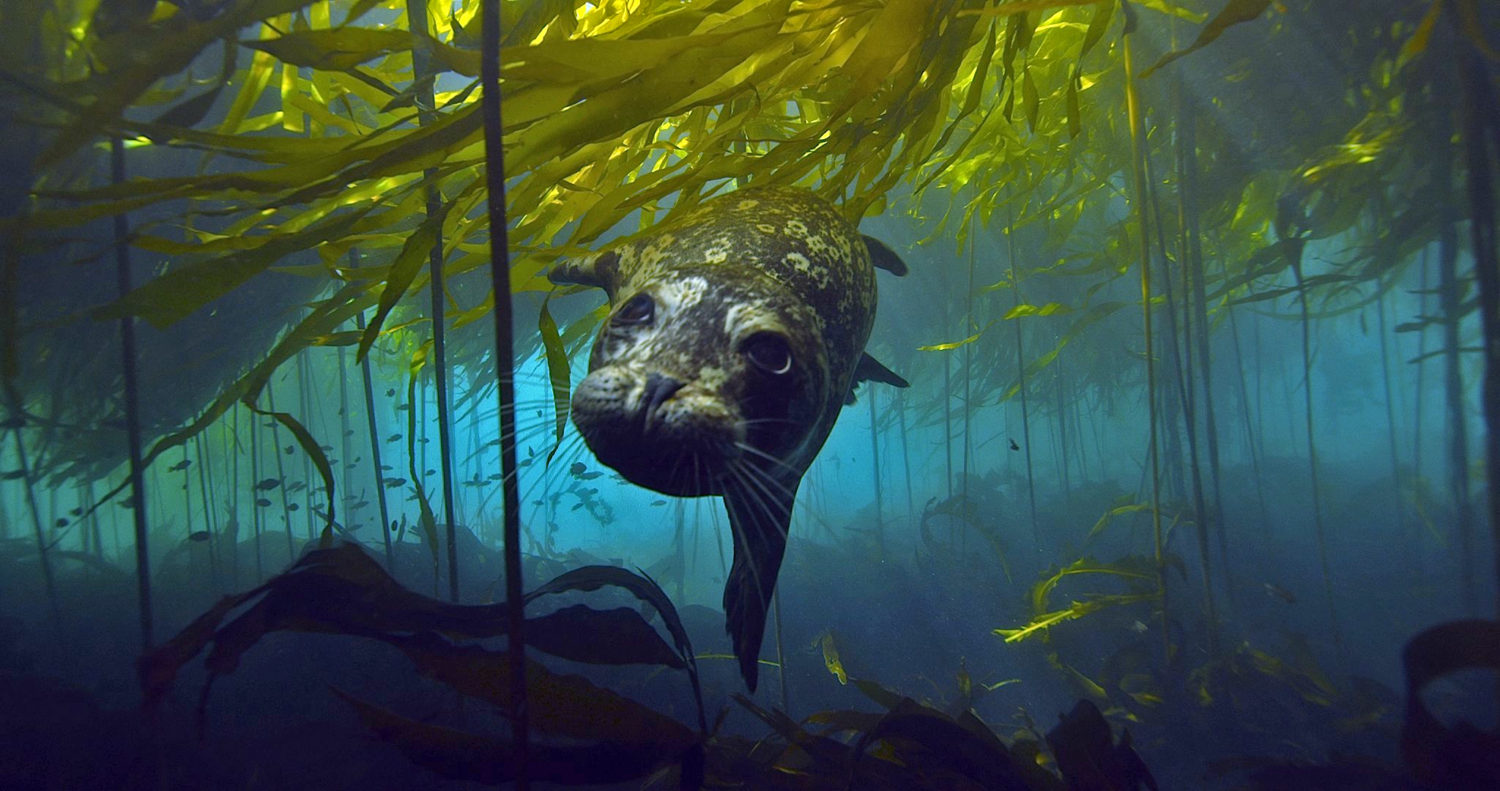
Photo: Florian Graner
Kelp forests are an iconic part of California’s coastline. Lush canopies float along nearshore waters up and down the state, hinting at the diversity of marine life teeming beneath the surface. These underwater forests are biodiversity hot spots, providing habitat and food for a myriad of ecologically and economically important fish and invertebrate species like rockfish and red abalone.
However, over the last several years, northern California bull kelp forests have been hit hard by a series of climatic and ecological stressors. Intense ocean warming combined with the loss of seastars from a mysterious wasting disease and an explosion in purple urchin populations have resulted in a >90% reduction in bull kelp canopy across a 350 km stretch of coastline.
Urchin barrens now sprawl across the sea floor where rich kelp forests once thrived. Without seastar predators to keep populations in check, purple urchins aggressively graze down bull kelp and can persist even after most food is gone. For this reason, and without immediate action, urchin barrens may permanently replace kelp forests. California Coastkeeper Alliance is now advocating for the state to provide long-term funding for a permanent purple urchin bounty program that would incentivize the harvest of purple urchins from kelp forest habitat, thereby alleviating grazing pressure on kelp and increasing its chances of recovery.
The widespread decimation of kelp forests demonstrates how quickly ecosystems can collapse in the face of climate change, with major economic and cultural impacts. Loss of kelp forest habitat has already triggered a mass red abalone die off and subsequent closure of the recreational red abalone fishery, worth $44 million, and collapse of the red urchin fishery, worth $3 million. The long-term effects of kelp deforestation on the ecological health and economic value of California’s northern coastline is uncertain, but potentially devastating.
Sacramento is beginning to respond to this environmental emergency. Stakeholders across the state, chaired by the Greater Farallones Association and the California Department of Fish and Wildlife, developed a Bull Kelp Recovery Plan with recommendations for the management and recovery of kelp forests. Additionally, the Ocean Protection Council has funded two pilot projects that will aerially monitor remaining kelp canopy and identify optimal methods for purple urchin removal. However, a timely and effective response to restore kelp forests requires more than planning and piloting; it requires swift and comprehensive funding and action.
California Coastkeeper Alliance has identified a series of actions that California can take now to improve the resiliency of our coastal and marine ecosystems. By eliminating additional stressors like stormwater pollution and invasive species, we can help give our ocean a fighting chance as it faces the realities of a changing climate.

Associate Director Natalie Caulk provides operational leadership and manages the ongoing implementation of programs and partnerships of CCKA.



